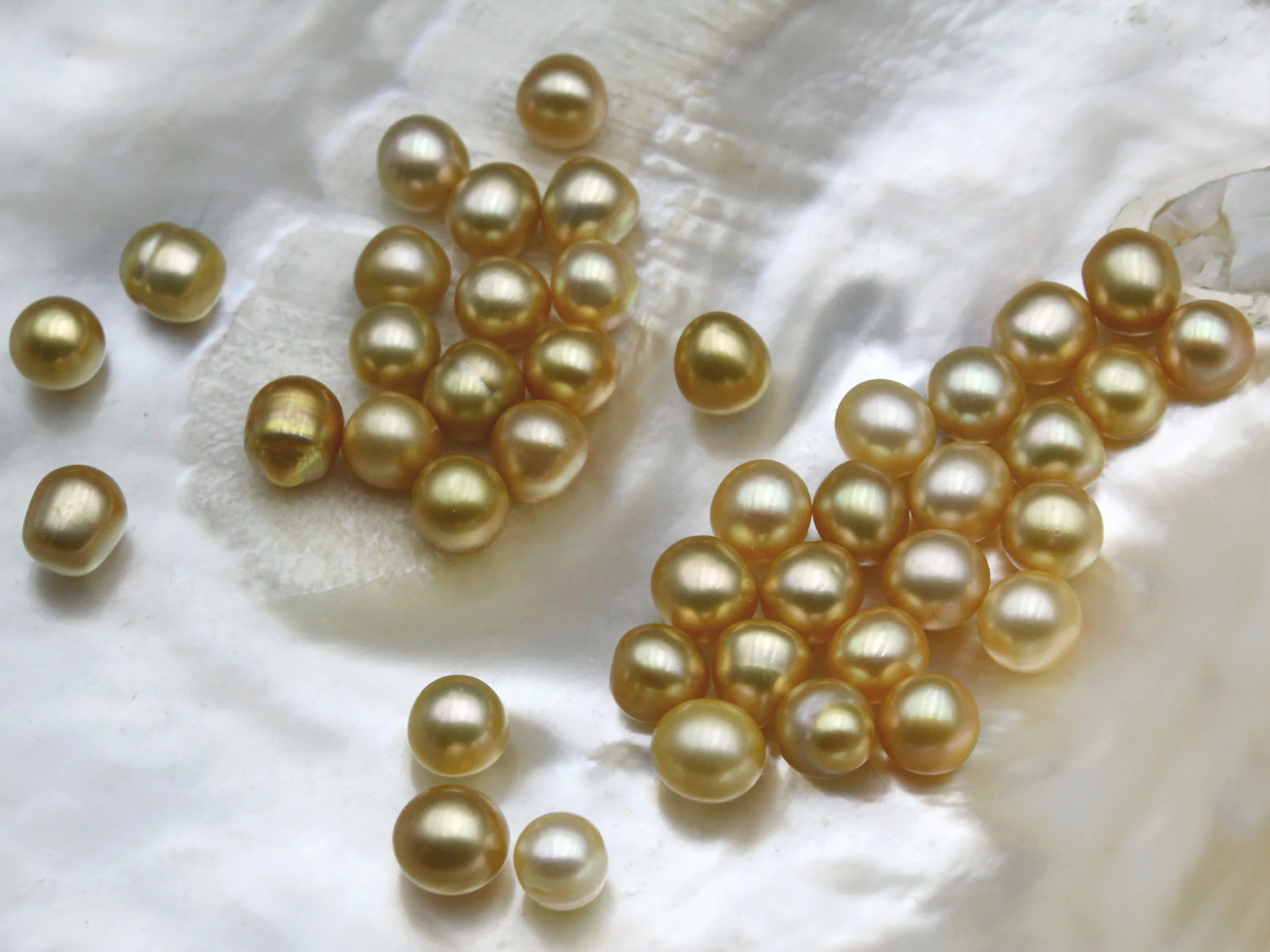
South Sea Pearls
-
The gold-lipped South Sea pearl oyster produces pearls displaying a wide range of colors, from creamy white and champagne to yellow and rich gold. While each hue is beautiful, gold is typically considered the most valuable.
The gold-lipped South Sea pearl oyster produces pearls displaying a wide range of colors, from creamy white and champagne to yellow and rich gold. While each hue is beautiful, gold is typically considered the most valuable.
South Sea pearls are typically larger and have a thick nacre layer. As a result, not all golden South Sea pearls are perfectly round. A variety of shapes can be found, including drop, button, baroque, and circled.
Golden South Sea pearls can grow to impressive sizes. The average size ranges from 10 to 13 mm, with some reaching up to 20 mm.
-
South Sea pearls command the highest value among cultured pearls. Their substantial size and scarcity drive high demand, with a flawless strand of large, deep golden pearls potentially exceeding $100,000.
-
Australian waters are the primary source of white South Sea pearls, while golden South Sea pearls are predominantly cultivated in the Philippines and Indonesia.






